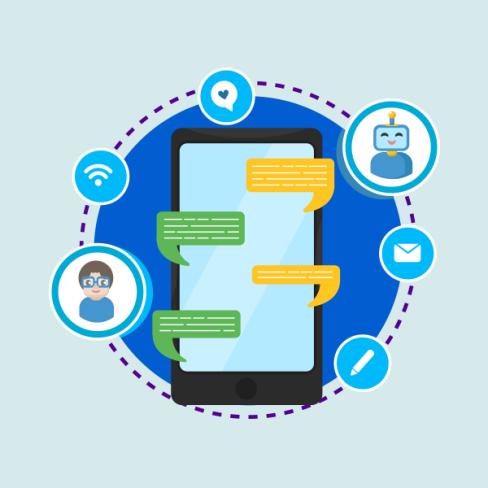
Conversational Marketing: The New Direct Marketing
What Is Conversational Marketing?
Conversational marketing is a new, personalized approach to doing business online. It moves buyers through marketing and sales funnels by using the power of one at a time questions, a lot like a real-time conversation.
In other words, it’s an automated conversation with your website visitors. You can ask them different questions based on their previous answers, so they can give you specific details about them.
That way, you get the exact information you need from your website visitors. And it happens at the same time that they engage with your business.
Why do you need Conversational Marketing?
There are many issues with current marketing activities that have led to this new development but in short, people are demanding more. Most companies would agree that their customer base wants more from their service and product, and more from the buying experience. A study by Forrester suggested that 87% of companies know that a traditional buying experience is no longer enough to satisfy their customers. Conversational Marketing is a response to this demand for a better experience in the digital age.
Conversational Marketing Best Practices
- Pick the right places. Focus on the most popular areas of your business.
- Keep your old marketing. Conventional methods still work great. Use both traditional and conversational marketing.
- Map out the customer journey and build around it.
- Be human. Talk at your customers, not to them.
- Think about the visitor. Your goal should be to make your customer experiences easier and more pleasant.
- Keep in simple. Remember that visitors expect an easy and quick process.
- Test everything and tweak when necessary.
- Follow-up. Even if you’re relying on marketing automation software, always route people to a real human at some point.
The Benefits of Conversational Marketing
1. Learn about your customers
You probably know how important knowing your audience is and the value of user testing and research, and conversational marketing allows you to do this at such a deep level. Instead of recruiting “potential customers” for surveys or research, you are actually getting to speak directly with your actual customers – people already interested in your products or services.
2. Personalize solutions
Instead of losing customers that don’t exactly fit into the standard model available on your website, you can work with them to find a solution that works best for you. If you are selling a service, maybe what the person needs is a free trial, maybe they need services 1 and 3 instead of services 1,2, and 3. Leverage conversational marketing to work with your customers to deliver them the best match for them.
3. Create positive experiences
If you are a marketer or entrepreneur you probably spend a lot of time making sure that customers have a positive experience with your brand through a handful of touch points like your site, social media, and email
Conversational marketing strategy
Choose your channels and define Q&As
Knowing your audience and their needs helps in determining what kind of channels you need and for what purpose, whether it’s to answer generic FAQs, provide information related to your products or services, assist in finalising a purchase, or promote your gated content or demos.
Personalise and optimise
Personalising your conversations based on your customers’ behaviour and the stage of their customer journey enables you to show them the right content in the right channels at the right time.
Ask for feedback
Collecting feedback from your customers and prospects plays an important role in developing your conversational strategy further.
It can reveal the weaknesses and areas of improvement, and help you create more meaningful interactions, and thus further enhance customer experience.



